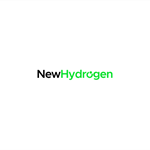The Company’s novel low-cost thermochemical process uses heat to split water allowing for large-scale, low-cost clean hydrogen production to meet the needs of an energy hungry world
SANTA CLARITA, Calif., March 05, 2024 (GLOBE NEWSWIRE) -- NewHydrogen, Inc. (OTCMKTS:NEWH), provided an update on its breakthrough ThermoLoop™ technology, which uses water and heat instead of electricity to produce the world’s cheapest green hydrogen. The company shared progress on its collaboration with the University of California Santa Barbara (UCSB) in developing the ThermoLoop™ technology.
“The demand for power is insatiable,” remarked Steve Hill, CEO of NewHydrogen. “According to McKinsey & Company, global electricity demand is poised to surge, projected to more than double from 25,000 terawatt-hours (TWh) in 2022 to between 52,000 and 71,000 TWh by 2050.This surge is attributed to the burgeoning energy requirements emerging markets and the widespread electrification across various sectors of the economy. To put it in perspective, a terawatt-hour (TWh) represents one trillion-watt hours. Consequently, the future need for 52 to 71 trillion-watt hours is almost unimaginable.”
The acceleration towards electric vehicles is a significant driver of this escalating electricity demand. Yet, just a year ago, few of us anticipated the energy needs of AI.
Recently, OpenAI's CEO Sam Altman said an energy breakthrough is necessary for future artificial intelligence, which will consume vastly more power than people have expected. "There's no way to get there without a breakthrough," Altman said.
“Green hydrogen can be the breakthrough,” Mr. Hill continued. “Our feedstock is water, which covers about 70% of the Earth. We use heat rather than expensive electricity to split the water to produce the world’s cheapest green hydrogen, which can be used to produce cheap electricity. However, big is much better than small. Our process can scale and make a meaningful difference in meeting the power demands of the future.”
Working with a world class research team at UC Santa Barbara, NewHydrogen is developing ThermoLoop™, a novel thermochemical process capable of water splitting without relying on costly electricity or expensive electrolyzers. Instead, it leverages relatively low-cost heat. Notably, unlike electrolysis, the process costs decrease with increasing unit size – allowing the potential for large-scale clean hydrogen production.
The most common method of making green hydrogen today is to split water into oxygen and hydrogen with an electrolyzer using green electricity produced from solar or wind. However, green electricity is, and always will be, very expensive. It currently accounts for over 70% of the cost of green hydrogen.
Traditionally, thermochemical methods have relied on managing extreme temperatures, often exceeding 2,000°C, to split water into oxygen and hydrogen. However, the ThermoLoopTM process is based on materials identified with an innovative model developed by the UCSB team for splitting water into hydrogen and oxygen within standard industrial temperature ranges, typically below 1000°C. This is pivotal in achieving the most cost-effective and efficient production of green hydrogen.
Mr. Hill concluded, “In the coming months the UCSB team will focus on validating their model and demonstrating specific materials for ThermoLoop™. Their work to date marks an exciting leap forward in our quest for sustainable technology.”
For more information about NewHydrogen and its ThermoLoop™ technology, please visit https://newhydrogen.com/.
About NewHydrogen, Inc.
NewHydrogen is developing ThermoLoop™ – a breakthrough technology that uses water and heat rather than electricity to produce the world’s lowest cost green hydrogen. Hydrogen is the cleanest and most abundant element in the universe, and we can’t live without it. Hydrogen is the key ingredient in making fertilizers needed to grow food for the world. It is also used for transportation, refining oil and making steel, glass, pharmaceuticals and more. Nearly all the hydrogen today is made from hydrocarbons like coal, oil, and natural gas, which are dirty and limited resources. Water, on the other hand, is an infinite and renewable worldwide resource.
Currently, the most common method of making green hydrogen is to split water into oxygen and hydrogen with an electrolyzer using green electricity produced from solar or wind. However, green electricity is and always will be very expensive. It currently accounts for 73% of the cost of green hydrogen. By using heat directly, we can skip the expensive process of making electricity, and fundamentally lower the cost of green hydrogen. Inexpensive heat can be obtained from concentrated solar, geothermal, nuclear reactors and industrial waste heat for use in our novel low-cost thermochemical water splitting process. Working with a world class research team at UC Santa Barbara, our goal is to help usher in the green hydrogen economy that Goldman Sachs estimated to have a future market value of $12 trillion.
Safe Harbor Statement
Matters discussed in this press release contain forward-looking statements within the meaning of the Private Securities Litigation Reform Act of 1995. When used in this press release, the words "anticipate," "believe," "estimate," "may," "intend," "expect" and similar expressions identify such forward-looking statements. Actual results, performance or achievements could differ materially from those contemplated, expressed or implied by the forward-looking statements contained herein. These forward-looking statements are based largely on the expectations of the Company and are subject to a number of risks and uncertainties. These include, but are not limited to, risks and uncertainties associated with: the impact of economic, competitive and other factors affecting the Company and its operations, markets, the impact on the national and local economies resulting from terrorist actions, the impact of public health epidemics on the global economy and other factors detailed in reports filed by the Company with the United States Securities and Exchange Commission. Any forward-looking statement made by us in this press release is based only on information currently available to us and speaks only as of the date on which it is made. We undertake no obligation to publicly update any forward-looking statement, whether written or oral, that may be made from time to time, whether as a result of new information, future developments or otherwise.
Investor Relations Contact:
NewHydrogen, Inc.
ir@newhydrogen.com



Source:
NewHydrogen, Inc.2024 GlobeNewswire, Inc., source Press Releases



